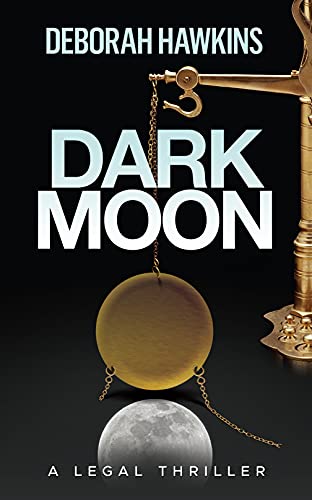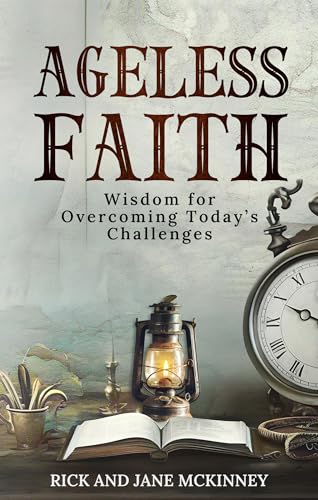Len Edgerly Interviews Stephen Windwalker,
Creator of Kindle Nation Daily
By LEN EDGERLY
Contributing Editor
When Stephen Windwalker and I get together, at least one of us usually brings a new gadget.
As creator of Kindle Nation Daily, Steve is on top of all things Kindle, but when he stopped by the Kindle Chronicles studio here in Cambridge this week, he had a tiny and very cool gadget that was not a Kindle.
 It’s called Fitbit. It weighs 1.6 ounces, and it tells Steve (among other things) how many steps he has taken on his relatively new daily walking regimen of 10,000 steps, along with sleep information via a wristband that he can wear at night. It uses 3D motion-sensing and altimeter technology, and synchs up constantly to a pretty cool dashboard on his computer.
It’s called Fitbit. It weighs 1.6 ounces, and it tells Steve (among other things) how many steps he has taken on his relatively new daily walking regimen of 10,000 steps, along with sleep information via a wristband that he can wear at night. It uses 3D motion-sensing and altimeter technology, and synchs up constantly to a pretty cool dashboard on his computer.
I want one!
Like me, Stephen Windwalker owns an arsenal of gadgets that he has amassed over the years we have been covering eReaders and, more recently, tablets. On the shelf behind me are, from right to left, a Sony PRS-T2 eReader, a Nook Simple Touch with Glowlight, Nexus 7, iPad 3, and six Kindles.
The reason that I probably won’t pony up $77.74 for a Fitbit is that I’m saving money—which I assure my wife is earmarked for Kindle Chronicles research and development projects—for an iPad Mini, not to mention the Kindle HD 8.9” that I have on order and maybe even a Microsoft Surface.
 I suspect that many of you reading this share a love of new gadgets, especially when they help you to read in a better way. So you might share my surprise in hearing that gadget lover Stephen Windwalker made a convincing case to me this week that—gasp—it’s not really about the gadgets any more.
I suspect that many of you reading this share a love of new gadgets, especially when they help you to read in a better way. So you might share my surprise in hearing that gadget lover Stephen Windwalker made a convincing case to me this week that—gasp—it’s not really about the gadgets any more.
“When you look at all these devices that are out, the air is kind of coming out of the balloon in terms of the competition between devices,” he told me after putting the Fitbit away.
He praised the iPad 3, the iPhone, the new Kindle Fire HDs, the Kindle Paperwhite, and even the new Nook tablets, which look very sharp as hardware.
“But,” he said, “the idea that people are any longer at the point where when a new device comes out they’re going to throw the old one away and grab the new one—I’m just not convinced of that any more.”
Steve emphasized the importance of focusing on what people actually do on these devices, “rather than some proposition that 11 left-handed redheads might use.”
Within a range of, say, five percent in terms of functionality for what people actually do on devices, customer motivation is not centered on hardware features, he said.
“What’s really important,” Steve said, “is the delivery of content.”
He offered a good analogy in suggesting that you don’t decide where to buy a washer/dryer by how nice and modern the store looks. What matters is the value proposition, price, and how good the washer/dryer is.
“What we get now is that none of these companies are going to dominate the marketplace based on hardware alone, if they’re all within spitting distance of each other,” Steve said. What enables a competitor like Amazon to dominate a market are catalog, customer base, connectivity, and convenience —“The Four C’s” as he has referred to them.
Steve’s view of gadgets echoes what Amazon CEO Jeff Bezos said at the September 6 press conference when the new Kindles were introduced.
“People don’t want gadgets anymore,” Bezos asserted. “They want services. They want services that improve over time. They want services that get better every day, every week, and every month, year after year.”
I nodded my head when I heard Bezos make that statement, and I nodded again when Steve extended the idea in our conversation this week. It seems eminently sensible when you see it that way.
Why then, am I such a sucker for the next new gadget? It’s about a boy and his toys, I suppose, a direct line back to childhood infatuation with shiny new things that make noise and scare the family dog.
What matters in the business of technology, though, is which gadgets become products we really use. I am sometimes surprised by the ones that have the most staying power.
For Stephen Windwalker, the venerable Kindle DX—the 9.7-inch eReader introduced in 2009—is still his E Ink reader of choice, because of its great readability, audio, and 3G. Steve listens to a lot of text-to-speech and Audible.com titles, so even though he purchased a Kindle Paperwhite and admires its beautiful display, the DX still rules.
“It’s right on my desk,” he said of the Paperwhite, “and I almost never use it.” He is, however, using a Kindle HD 7” and is even surprised at how much better it is for use in sunlight, compared with the iPads and iPhones he has owned.
As for me, I sold my Kindle DX on eBay a couple of years ago, and I’ve become a heavy user of the Paperwhite and the Kindle HD 7”. I’m planning on selling my iPad 3 to make way for the Kindle HD 8.9”.
I’d like to figure out a reason to get one of those Fitbit gadgets, but for two years I have monitored my sleep with Zeo tracking gadgets, and I prefer cross-trainers, bikes, and rowing shells to walking 10,000 steps a day on my unreliable knees.
As Steve said, just because there’s a new gadget in town doesn’t mean I have to buy it and throw away the old one. I believe that. I really do.
I wonder which color I would get—the blue or the plum?
Photo credits:
- Steve Windwalker, photo by Betty Scharf at Fenway Park, September 26, 2012
- Fitbit, Amazon customer image by Amer
_______________________________________________
 Kindle Nation Weekender columnist and contributing editor Len Edgerly blogs at The Kindle Chronicles, where you can hear his interview with Stephen Windwalker in Episode 219.
Kindle Nation Weekender columnist and contributing editor Len Edgerly blogs at The Kindle Chronicles, where you can hear his interview with Stephen Windwalker in Episode 219.













The Kindle Chronicles Interview:
In Amazon’s World of Gadgets, It’s Really All About the 4 C’s of the Kindle “Service:”
Catalog, Customer Base, Connectivity, and Convenience
Len Edgerly Interviews Stephen Windwalker,
Creator of Kindle Nation Daily
By LEN EDGERLY
Contributing Editor
When Stephen Windwalker and I get together, at least one of us usually brings a new gadget.
As creator of Kindle Nation Daily, Steve is on top of all things Kindle, but when he stopped by the Kindle Chronicles studio here in Cambridge this week, he had a tiny and very cool gadget that was not a Kindle.
I want one!
Like me, Stephen Windwalker owns an arsenal of gadgets that he has amassed over the years we have been covering eReaders and, more recently, tablets. On the shelf behind me are, from right to left, a Sony PRS-T2 eReader, a Nook Simple Touch with Glowlight, Nexus 7, iPad 3, and six Kindles.
The reason that I probably won’t pony up $77.74 for a Fitbit is that I’m saving money—which I assure my wife is earmarked for Kindle Chronicles research and development projects—for an iPad Mini, not to mention the Kindle HD 8.9” that I have on order and maybe even a Microsoft Surface.
“When you look at all these devices that are out, the air is kind of coming out of the balloon in terms of the competition between devices,” he told me after putting the Fitbit away.
He praised the iPad 3, the iPhone, the new Kindle Fire HDs, the Kindle Paperwhite, and even the new Nook tablets, which look very sharp as hardware.
“But,” he said, “the idea that people are any longer at the point where when a new device comes out they’re going to throw the old one away and grab the new one—I’m just not convinced of that any more.”
Steve emphasized the importance of focusing on what people actually do on these devices, “rather than some proposition that 11 left-handed redheads might use.”
Within a range of, say, five percent in terms of functionality for what people actually do on devices, customer motivation is not centered on hardware features, he said.
“What’s really important,” Steve said, “is the delivery of content.”
He offered a good analogy in suggesting that you don’t decide where to buy a washer/dryer by how nice and modern the store looks. What matters is the value proposition, price, and how good the washer/dryer is.
“What we get now is that none of these companies are going to dominate the marketplace based on hardware alone, if they’re all within spitting distance of each other,” Steve said. What enables a competitor like Amazon to dominate a market are catalog, customer base, connectivity, and convenience —“The Four C’s” as he has referred to them.
Steve’s view of gadgets echoes what Amazon CEO Jeff Bezos said at the September 6 press conference when the new Kindles were introduced.
“People don’t want gadgets anymore,” Bezos asserted. “They want services. They want services that improve over time. They want services that get better every day, every week, and every month, year after year.”
I nodded my head when I heard Bezos make that statement, and I nodded again when Steve extended the idea in our conversation this week. It seems eminently sensible when you see it that way.
Why then, am I such a sucker for the next new gadget? It’s about a boy and his toys, I suppose, a direct line back to childhood infatuation with shiny new things that make noise and scare the family dog.
What matters in the business of technology, though, is which gadgets become products we really use. I am sometimes surprised by the ones that have the most staying power.
For Stephen Windwalker, the venerable Kindle DX—the 9.7-inch eReader introduced in 2009—is still his E Ink reader of choice, because of its great readability, audio, and 3G. Steve listens to a lot of text-to-speech and Audible.com titles, so even though he purchased a Kindle Paperwhite and admires its beautiful display, the DX still rules.
“It’s right on my desk,” he said of the Paperwhite, “and I almost never use it.” He is, however, using a Kindle HD 7” and is even surprised at how much better it is for use in sunlight, compared with the iPads and iPhones he has owned.
As for me, I sold my Kindle DX on eBay a couple of years ago, and I’ve become a heavy user of the Paperwhite and the Kindle HD 7”. I’m planning on selling my iPad 3 to make way for the Kindle HD 8.9”.
I’d like to figure out a reason to get one of those Fitbit gadgets, but for two years I have monitored my sleep with Zeo tracking gadgets, and I prefer cross-trainers, bikes, and rowing shells to walking 10,000 steps a day on my unreliable knees.
As Steve said, just because there’s a new gadget in town doesn’t mean I have to buy it and throw away the old one. I believe that. I really do.
I wonder which color I would get—the blue or the plum?
Photo credits:
_______________________________________________
Share via: